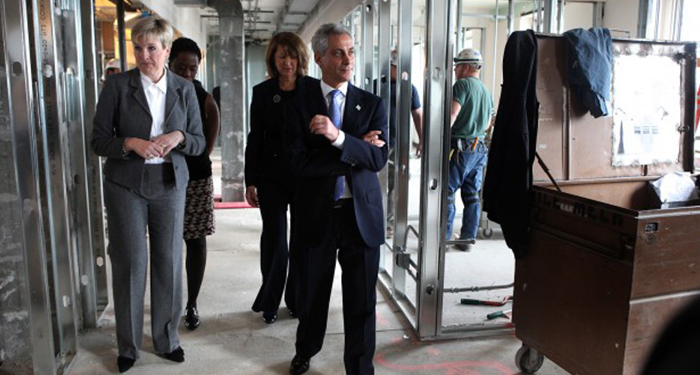
Dr. Beth Brooks (president of Resurrection University) Carole Brown, (chairperson of the TIF reform task force), Sandra Bruce (president and CEO of Provena-Resurrection), and Rahm Emanuel in January 2012. Resurrection received TIF funding from the city when it relocated to Wicker Park. PHOTO: NANCY STONE/CHICAGO TRIBUNE
Chicago Magazine extensively interviewed Rachel Weber, associate professor of urban planning and policy, on the workings of tax increment financing (TIF) and how TIF affects school funding, property taxes and development in Chicago.
There’s a logic to this (even if it contained a significant flaw). The amount of money that Chicago schools can get in a given year is limited to a certain amount above what they received in the prior year. Here’s how it works, as explained to me by UIC prof Rachel Weber:
“Your tax extension is not allowed to increase by more than five percent every year, or the rate of inflation. [The extension] depends on two main things: the tax base and the rate. Multiplied by each other, that equals their extension. If [municipalities] are restricted from raising their tax extension every year by a certain amount, then if their base grows wildly, just because developers are building a lot, or there’s a lot of demand for property in an area so that property values appreciate, they have to lower their rate in response, to comply with the tax cap.”


